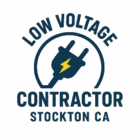Why Stockton Businesses are Upgrading to Structured Cabling Systems
Introduction
In today’s fast-paced business world, reliable communication and connectivity aren’t optional—they’re essential, which is why many turn to Professional Low Voltage Installers Stockton for dependable solutions. From small startups to established corporations in Stockton, businesses rely on stable networks for internet access, phone systems, security cameras, cloud services, and smart devices. Yet many companies are finding that their older cabling infrastructure is holding them back. That’s why more Stockton businesses are upgrading to structured cabling systems, a future-proof solution that improves efficiency, reduces downtime, and supports growth.
This article explores what structured cabling is, why it’s becoming a must-have in Stockton, and how businesses benefit from making the switch.
Table of Contents
- What is Structured Cabling?
- Why Stockton Businesses Need Structured Cabling
- Faster and More Reliable Connectivity
- Scalability for Future Growth
- Reduced Downtime and Maintenance Costs
- Compliance and Industry Standards
- Industries in Stockton Benefiting from Structured Cabling
- Key Components of Structured Cabling Systems
- Common Mistakes Businesses Make with Cabling
- Future Trends in Structured Cabling
- How to Choose the Right Cabling Partner in Stockton
- Conclusion: Why Now is the Right Time to Upgrade
- FAQs
What is Structured Cabling?
Structured cabling is a standardized system of cables, connectors, and hardware that provides a comprehensive telecommunications infrastructure. Unlike a “spaghetti mess” of wires, structured cabling organizes and integrates multiple systems—such as internet, telephony, security, and data storage—into one cohesive network.
The TIA/EIA-568 standards, widely used in the U.S., ensure structured cabling systems are designed for consistency, scalability, and reliability. This makes it easier for Stockton businesses to expand, upgrade, or troubleshoot their networks without costly disruptions.
Why Stockton Businesses Need Structured Cabling
1. Faster and More Reliable Connectivity
A well-designed cabling system reduces latency, improves bandwidth, and ensures seamless connectivity. For Stockton companies using VoIP phones, cloud-based tools, or video conferencing, this translates into fewer disruptions and more productive operations.
2. Scalability for Future Growth
Stockton is seeing growth in logistics, healthcare, education, and small businesses. Structured cabling supports scalability, making it easier to add new devices, expand offices, or adopt emerging technologies like 5G and IoT without overhauling the entire network.
3. Reduced Downtime and Maintenance Costs
Messy wiring can cause system failures and troubleshooting nightmares. Structured cabling simplifies identification and repair, cutting downtime and saving money in the long run. According to industry reports, structured cabling reduces network downtime costs by up to 40% compared to legacy systems.
4. Compliance and Industry Standards
Healthcare providers, financial institutions, and government offices in Stockton must follow strict compliance regulations for data security. Structured cabling ensures that the physical infrastructure meets ANSI/TIA standards, supporting compliance with HIPAA, PCI-DSS, and other frameworks.
Industries in Stockton Benefiting from Structured Cabling
- Healthcare: Hospitals and clinics need secure, high-speed connections for patient records, telemedicine, and IoT-enabled devices.
- Education: Schools and universities rely on structured cabling for digital classrooms, online testing, and campus-wide Wi-Fi.
- Logistics & Warehousing: Stockton’s central role in California’s shipping industry requires real-time inventory tracking and automation.
- Small & Medium Businesses (SMBs): From law offices to retail shops, SMBs gain reliable, scalable connectivity without constant IT headaches.
Key Components of Structured Cabling Systems
- Horizontal Cabling: Connects workstations to the telecommunications room.
- Backbone Cabling: Links different floors or buildings.
- Telecommunications Rooms: Houses network equipment and patch panels.
- Work Area Components: Connectors, outlets, and patch cords.
- Entrance Facilities: Entry points for internet and service providers.
- Equipment Rooms: Servers, switches, and core network gear.
Common Mistakes Businesses Make with Cabling
- Cutting corners with cheap cables that don’t meet standards
- Failing to plan for scalability
- Overlooking labeling and documentation
- Mixing low-voltage cabling with high-voltage systems
- Ignoring maintenance until failures occur
Future Trends in Structured Cabling
- Fiber Optic Expansion: Businesses are moving toward fiber for faster speeds and higher capacity.
- PoE (Power over Ethernet): Reducing the need for separate electrical wiring for cameras, access controls, and IoT devices.
- Smart Building Integration: Structured cabling as the backbone for energy-efficient and automated buildings.
- 5G & Edge Computing: Demand for low-latency, high-bandwidth cabling will rise as Stockton embraces new tech.
How to Choose the Right Cabling Partner in Stockton
- Look for certified installers with BICSI or TIA accreditation
- Ask for case studies and references from other Stockton businesses
- Ensure they provide documentation and labeling for every installation
- Confirm they offer warranties and post-installation support
Conclusion
Structured cabling is no longer a “nice-to-have” for Stockton businesses—it’s a critical investment in reliability, scalability, and long-term efficiency, and understanding What Does a Low Voltage Contractor Do? A Complete Guide for Stockton Homeowners & Businesses can help property owners see why professional installation matters. Whether you’re running a small office or a large facility, upgrading your cabling infrastructure reduces downtime, supports compliance, and prepares you for the future of business technology.
Now is the right time to upgrade—before outdated wiring slows you down.
FAQs
Q1: How much does structured cabling cost in Stockton?
Costs vary depending on building size and needs but typically range from $2 to $5 per square foot.
Q2: How long does installation take?
Most small to medium business installations take 1–3 days, while larger projects may take several weeks.
Q3: Is fiber optic better than copper for structured cabling?
Fiber optic offers higher speeds and greater bandwidth, but copper is still cost-effective and suitable for many SMBs.
Q4: Can structured cabling support wireless networks?
Yes—structured cabling provides the backbone that supports reliable Wi-Fi throughout a business.
Q5: How often should structured cabling be updated?
Typically every 10–15 years, or when your technology needs outgrow your current system.
